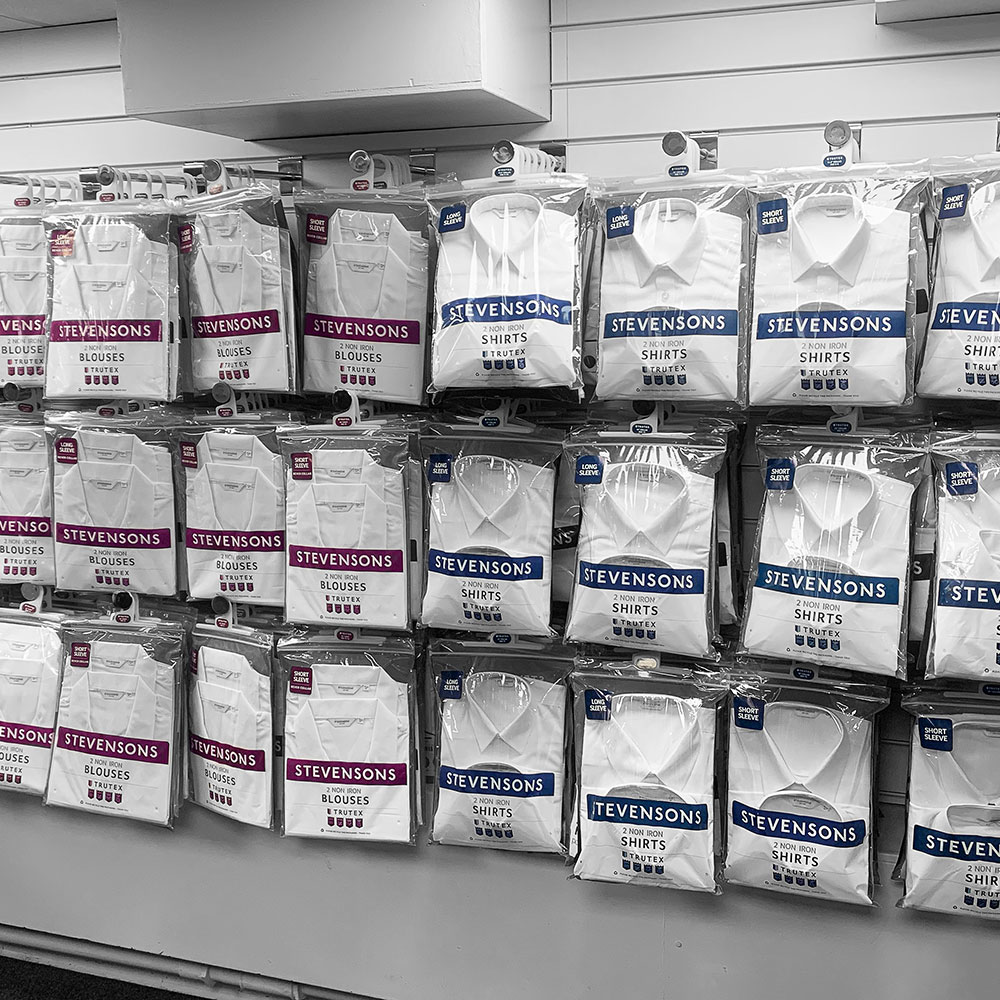
Stevensons, the UK’s largest independent schoolwear retailer, is making changes to its product ranges and packaging to support schools looking to move to gender-neutral uniform options.
The business, which has been supplying school uniforms since 1925, recently hit the headlines (The Guardian 22 Nov 2019) when it was claimed, incorrectly, that it was moving towards selling only gender-neutral uniforms. What Stevensons is doing is making a number of changes in-store as well as introducing terminology differences online.
Stevensons is reacting to a range of issues to support the diverse requirements of its many school partners as well as rapid societal change.
“We work closely with all the 500 plus schools we partner with,” says Mark Stevenson, joint managing director at Stevensons. “Recently, a small number have expressed interest in providing a range of uniform options that support their goal of achieving gender neutrality within their own school, which we are happy to work to support.”
In terms of product change, with trousers becoming a more popular option for girls, the range of styles needed to fit their shape has increased. Shorts for warmer summer terms are also a trend, with more and more schools requesting items suitable for all pupils.
However, from a retailing perspective, knowing what to call items to differentiate them is becoming as much of a problem as providing garments suitable for all ages, shapes and sizes.
The product naming process for online shopping is one of the key projects Stevensons’ IT team has been grappling with in recent months.
For example, removing the association of ‘boys’ or ‘girls’ with particular clothes in a school uniform policy, product listing or online product category for schools that request it. This may not change the way pupils dress, but it can be very important for young people in building a culture of acceptance in schools.
However, one of the trickiest issues for a retailer in providing a gender-neutral uniform is that a ‘one-garment-fits-all’ solution doesn’t take into account inherent differences in male and female body types; particularly as children grow into adults.
Children’s rapidly changing physical form affects the type of garments required. This means garments with a more ‘fitted’ shape require some form of labelling to differentiate them, but the labels don’t need to be defined by gender.
The issue of gender neutrality and how it affects everyday life is becoming a more widely discussed issue in society.
Recent changes to the uniform offered at a small number of schools wishing to reflect their own definition of a gender-neutral uniform prompted some extreme reactions from both pupils and parents. For instance, parents and pupils protested outside Priory School in Lewes, East Sussex, after it made trousers compulsory for all pupils.
Furthermore, schools in Wales have now adopted a gender-neutral policy meaning they cannot enforce separate dress codes. Undoubtedly, applying this form of regulation will also be discussed in the wider UK.













